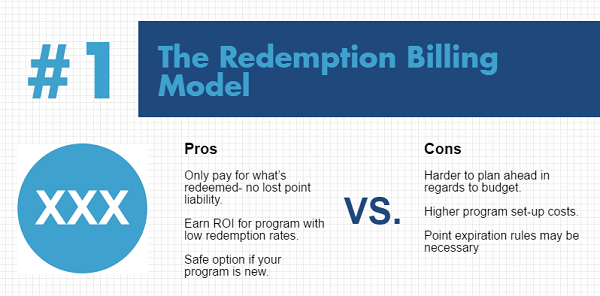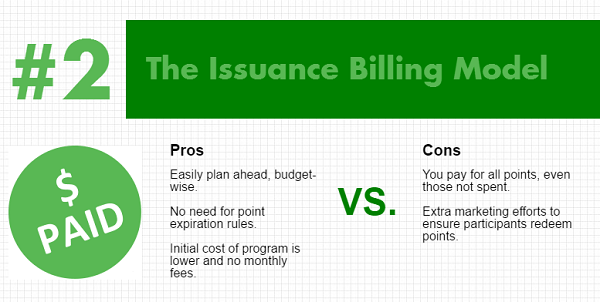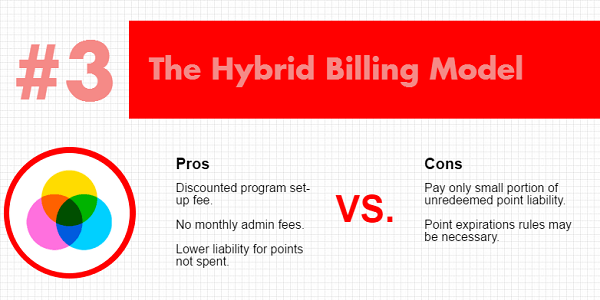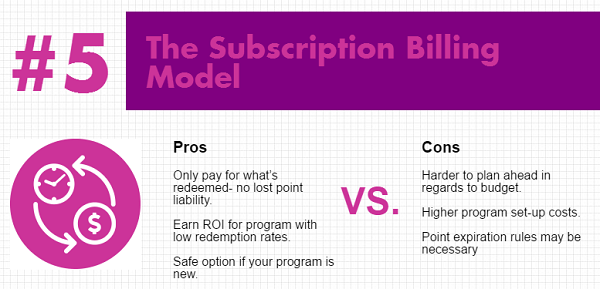Today’s incentive programs are incredibly versatile and adaptable. That’s what makes them such great sales and marketing tools for a variety of businesses. Agile online incentive technology means you can set up an incentive program just about any way you want. That includes choosing the way you want to pay for the acquisition and redemption of the digital currency used in your program, i.e. online reward points.
Let’s take a look at five common incentive program billion options and the pros vs. cons of each.

If you’d rather pay for reward points once participants spend them on items in your reward catalog, a redemption billing model is a way to go. With this model, you’re not billed for online points until participants have used them.

An issuance billing model means that you pay for online reward points as soon as you distribute, or issue, them to the participant. This model is more cost-effective when participants are more likely to redeem their points.

The hybrid billing model combines the redemption and issuance models to get the best of both worlds. You pay a portion of points’ cost on issuance (for ex: 20%) then pay the remaining cost after points are redeemed (80%, in this case).

With a face-value billing model, you pay for reward points with no additional mark-up—simple as that!

Using a subscription billing model for your reward program, you pay a monthly subscription cost per program participant. This model focuses the program’s cost on engaging and motivating each participant, rather than the cost of rewards.
Whatever your current business objectives and marketing budget are, your incentive program billing model should align with your needs. Choose the billing model that makes the most sense for you in order to max out your program’s ROI.



